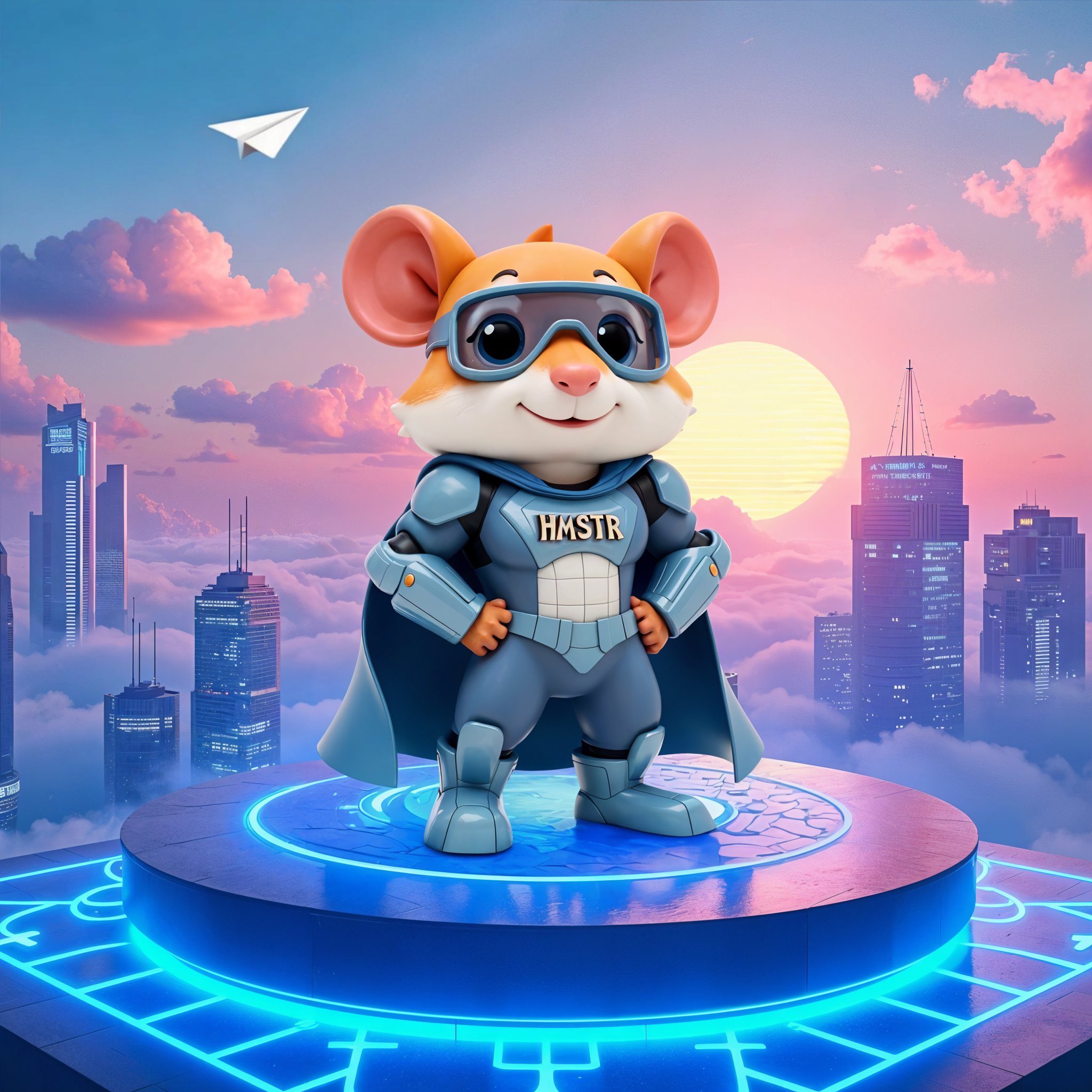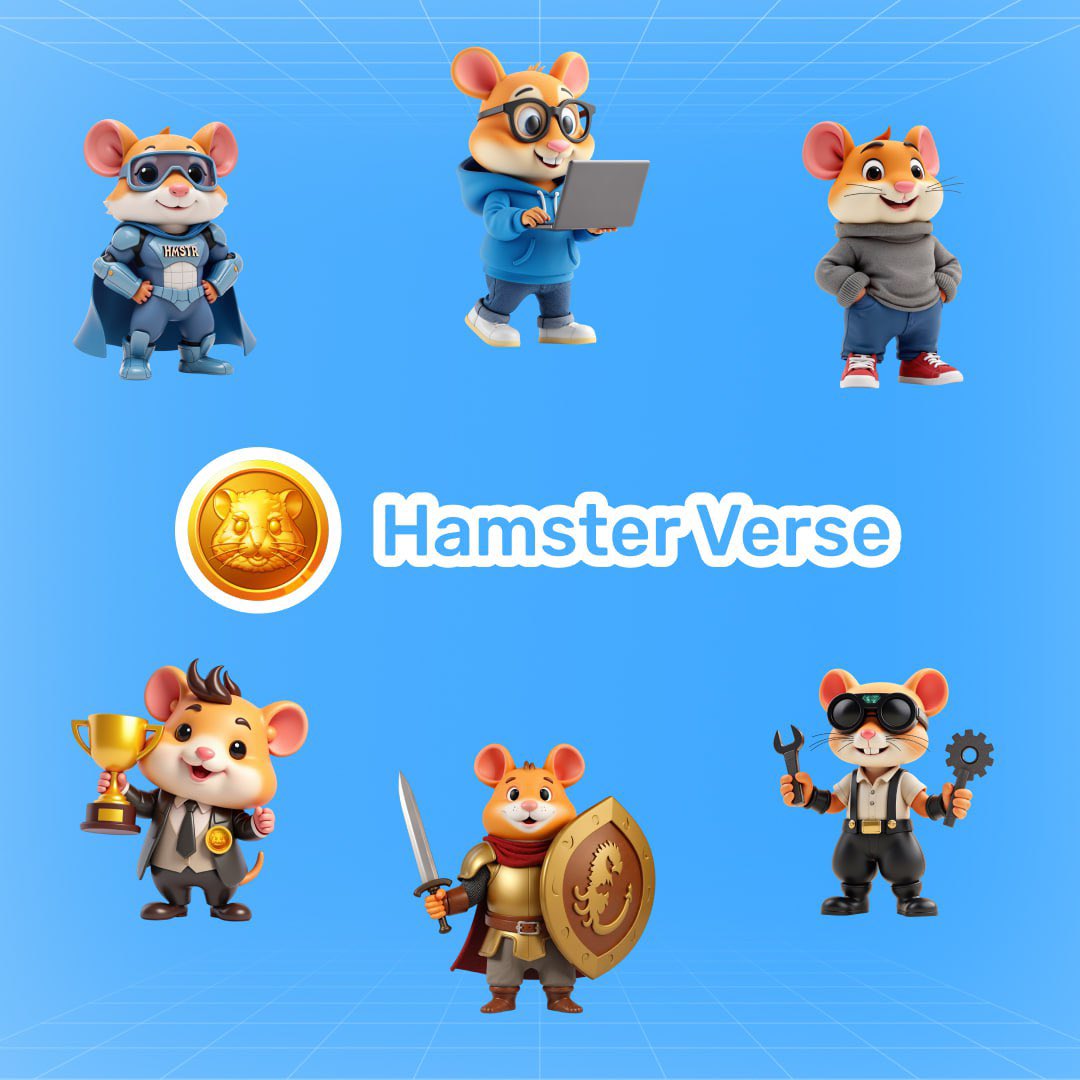What is Hamster Kombat and How Does It Work?
Hamster Kombat is a play-to-earn clicker game that runs on The Open Network (TON) blockchain. Players take on the role of a hamster CEO who manages a virtual cryptocurrency exchange. The game became a viral sensation in 2024, with the team claiming over 300 million users at its peak.
The core gameplay revolves around a simple tap-to-earn mechanic. Players tap on a hamster avatar to earn virtual coins. These coins serve as the primary in-game currency. But the game goes beyond just tapping. Players must think strategically about how to invest their earnings.
The strategic layer involves upgrading your virtual exchange. Each upgrade increases your passive income generation. This creates a compounding effect where smart investments lead to faster growth. The game also features daily tasks, special missions, and puzzles. These extra activities provide bonus rewards and keep players engaged beyond the basic tapping mechanic.
What makes Hamster Kombat unique is its accessibility through Telegram. Players don't need to download a separate app or navigate complex blockchain interfaces. They can start playing directly within the messaging platform they already use. This low barrier to entry helped drive the game's explosive growth in 2024.
Review HMSTR Price on LBank
HMSTR() Price
The current price of
The History of Hamster Kombat
Hamster Kombat made its official debut on the TON blockchain in March 2024. While there had been earlier experiments with clicker-style games, this launch marked the beginning of the project’s rise as a mainstream crypto phenomenon.
The game’s creators have stayed largely anonymous, in keeping with the style of many Web3 projects. Instead of focusing on personalities, the team emphasized the product and its community-driven growth. From the start, they highlighted sustainability, claiming the project could fund operations without heavy reliance on team token sales.
By mid-2024, the combination of simple mechanics, viral Telegram distribution, and TON integration pushed Hamster Kombat into the spotlight, setting the stage for its rapid expansion.
Key Milestones in Hamster Kombat
TON Launch
Official launch on TON blockchain
Tokenomics Revealed
Tokenomics revealed with a total supply of 100 billion HMSTR
Airdrop & Listings
HMSTR token airdrop and exchange listings completed
User Growth Milestone
laimed 300 million users; independent reports suggest ~41 million monthly active users by November
HamsterVerse Launch
Launch of HamsterVerse (Season 2) with expanded features
New ATL
HMSTR fell to a new all-time low of about $0.000619
Understanding HMSTR Tokenomics and Distribution
The HMSTR token serves as the backbone of the Hamster Kombat economy. It functions both as an in-game currency and a tradable cryptocurrency with real-world value. The token distribution strategy reveals the team’s focus on rewarding active players.
60% of the total HMSTR token supply was allocated to players through an airdrop. The remaining 40% supports liquidity, partnerships, and ecosystem development. The team has stated that airdrop allocations were designed to reward user engagement, but the fairness of this distribution has been widely debated.
The token serves multiple purposes within the ecosystem. Players use HMSTR to unlock exclusive features and upgrades in the game. It also powers transactions in the HamsterVerse expansion. Token holders are expected to gain governance and staking opportunities as the ecosystem matures.

Source: @hamster_kombat on X
HMSTR Token Price Performance and Market Analysis
The HMSTR token has experienced extreme volatility since its launch. Price movements reflect both the initial hype and subsequent challenges that many GameFi projects face.
September 21, 2025 marked a rough period for HMSTR holders. The token dropped to an all-time low of around $0.000619, down about 99.93% from its all-time high $0.92 in late 2024. Market cap hovered around $42 million, with a fully diluted valuation near $65 million.
Several factors contributed to the price decline:
- User dissatisfaction with small airdrop allocations
- Competition from other TON-based games
- General downturn in the GameFi market
- Falling active user numbers compared to the early peak
Hamster Kombat vs Notcoin: Comparing TON Gaming Giants
Both Hamster Kombat and Notcoin (NOT) emerged as leading play-to-earn games on the TON network. They share similar DNA but take different approaches to engaging players and building sustainable economies.
The games share several core features. Both operate on Telegram, making them instantly accessible to millions. They use simple tap-to-earn mechanics that anyone can understand. Players complete tasks and missions to earn tokens with real value. The TON blockchain provides the underlying infrastructure for both games.
But the differences reveal distinct strategies. Hamster Kombat focuses heavily on character development and world-building. Players connect with their hamster CEOs and feel invested in building their crypto empires. Notcoin takes a more utilitarian approach. It emphasizes task completion and rewards without elaborate theming.
The economic models also differ significantly. Hamster Kombat aims for a more integrated game economy where every action feeds into a larger system. Players must balance short-term gains with long-term strategic investments. Notcoin keeps things simpler with more direct reward mechanisms. This makes Notcoin easier to understand but potentially less engaging over time.
The Launch of HamsterVerse and Its Impact
HamsterVerse represents the team’s vision to expand beyond a single game. Launched in early 2025 as “Season 2,” this update transforms Hamster Kombat into a broader entertainment ecosystem.

Source: @hamster_kombat on X
The ecosystem introduces new gameplay modes such as GameDev Heroes, with more planned features in testing. Each game shares the HMSTR token economy. This unified system allows players to specialize in their preferred activities while contributing to the larger network.
The expansion is designed to keep players engaged beyond tapping and create multiple pathways for token utility. Whether it succeeds depends on adoption and whether the new modes can maintain long-term engagement.
Current Challenges and User Engagement Metrics
Despite ambitious plans, Hamster Kombat faces significant challenges. The drop from the claimed 300 million users to about 41 million monthly active players by November 2024 represents a steep decline. This raised concerns about sustainability.
The airdrop distribution was one of the main controversies. Many players complained of receiving “dust,” tiny allocations that felt disproportionate to their time investment. Social media backlash highlighted growing frustration with the project.
Competition from other TON projects like Catizen and Paws intensified in late 2024 and 2025. New games offered fresh experiences and higher incentives. The tap-to-earn novelty began to fade, making user retention difficult.
Market volatility added pressure. Risk appetite for GameFi tokens diminished as investors shifted toward more established cryptocurrencies.
Future Outlook and Strategic Direction
Hamster Kombat’s path forward depends on execution. The team’s strategy rests on three main pillars.
First, HamsterVerse must prove that interconnected games can hold users longer than simple tap mechanics. Early adoption will indicate whether this approach works.
Second, the Hamster ecosystem needs external developers to contribute. A vibrant platform requires diverse content beyond the core team’s games. Attracting outside developers will be critical.
Third, the HMSTR token must find sustainable demand drivers. Expanding use cases into staking, governance, and cross-game utility will help reduce reliance on speculation.
If GameFi continues evolving toward deeper gameplay and sustainable economies, Hamster Kombat could maintain relevance. But if user engagement keeps falling, it risks being remembered as another short-lived viral game.

